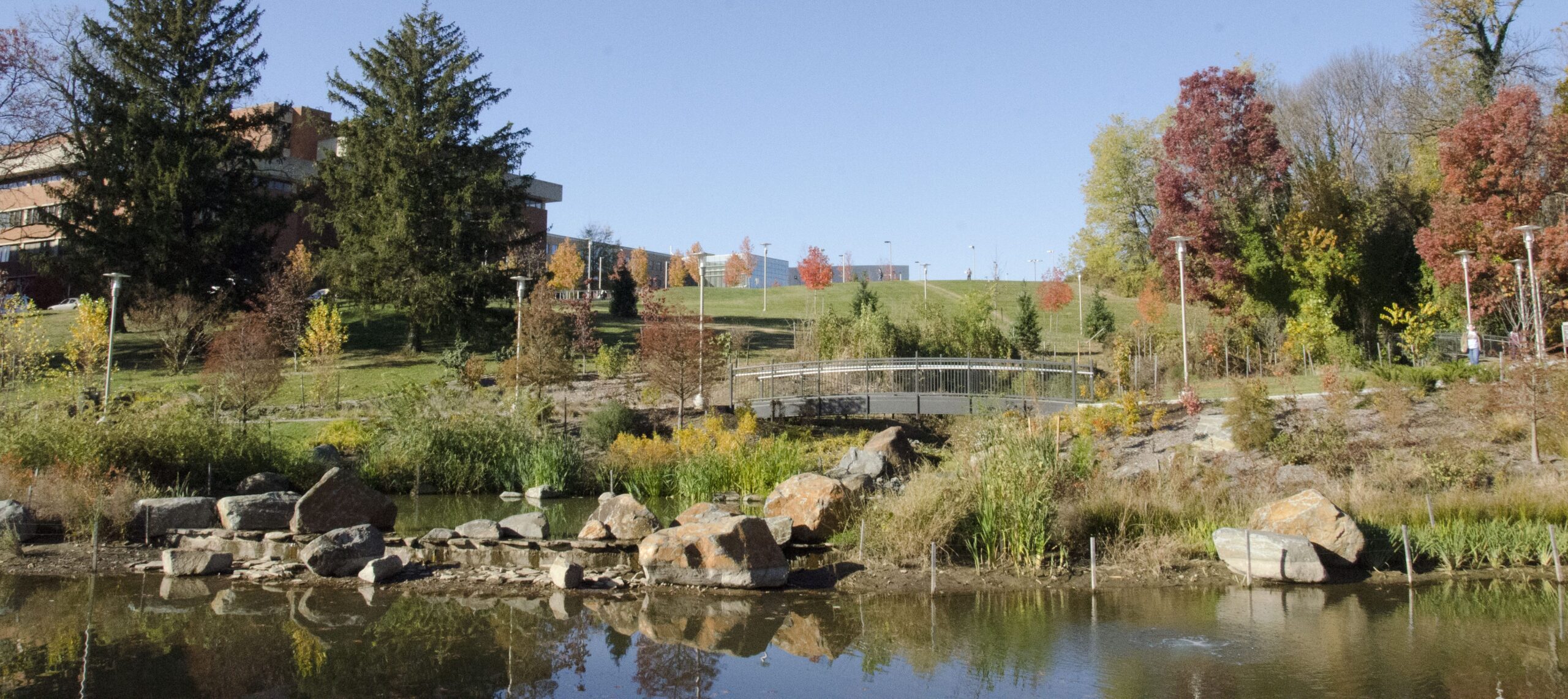Sustainability Matters at UMBC inducted 14 campus offices into the Green Offices program at the semiannual Green Office Training Luncheon and Certificate Reception, held on November 3. The Offices of the President and Provost, and a dozen others, joined 13 UMBC offices that qualified for the special designation in 2015 by committing to implement at least 20 items on a Sustainability Matters checklist. Green Offices upgrades include using task lighting, setting printers to automatically print double-sided, and lowering blinds during hot weather—small changes that, when combined, significantly decrease energy and other resource consumption.
President Freeman Hrabowski signed the American Colleges and Universities Presidents’ Climate Commitment in 2007, which committed UMBC to devising a climate action plan to achieve carbon neutrality. Since then, UMBC has been working to reduce the campus’ carbon footprint. For example, facilities management has updated heating and cooling systems and campus lighting. Other sustainable initiatives to date include a major renovation of the central Library Pond. Long regarded as a beautiful space for students to gather and relax, it is now also a state-of-the-art stormwater management system. Facilities staff have installed rain gardens and no-mow zones around campus, and green roofs now adorn four campus buildings.
Since President Hrabowski signed the climate commitment, UMBC has achieved a 15.5 percent reduction in carbon emissions, despite an 18 percent growth in campus population and seven percent increase in square footage of campus buildings. But even with such a positive trajectory, by 2013 it became clear to UMBC’s Climate Action Steering Committee that something important was missing. By then, says Tanvi Gadhia, UMBC sustainability coordinator, “We were looking for a way to more actively engage the UMBC community in green initiatives, to work together toward these shared goals.”
The Green Offices Program is one way that Gadhia helps faculty and staff cultivate “a visible culture of sustainability on campus.” She explains, “A lot of people wanted to be more sustainable, but didn’t feel empowered to take action,” so the program provides a scaffold upon which an office can build its own green efforts. Once an office joins the Green Offices program, it can receive signage, stickers, and recycling bins to support the implementation of its commitment.
The Green Office Program is one outcome of the Climate Action Steering Committee, created in 2007 concurrent with President Hrabowski signing the climate commitment. The steering committee oversees numerous sustainability efforts through work groups focused on energy, transportation, research and education, and waste reduction and recycling.
Student advocacy also plays a major role in campus conversation and action around climate change and sustainability. Each semester around a dozen undergraduates work as eco ambassadors to spread the message of sustainability across campus through peer education and outreach, and several student groups have a sustainability focus. One group collects markets’ surplus food that would otherwise be wasted and converts it into healthy, delicious meals for homeless people in Baltimore City. Another organizes a weekly campus clean-up.
“Sustainability has become a larger part of our identity and our culture at UMBC,” says Gadhia. “Sustainability is not a side project. It’s something we need to integrate into everything we do.”
A list of departments participating in the Green Office Program is available on UMBC’s Sustainability Matters website. To learn more about how to certify your office as a Green Office, or if you are interested in conducting research to quantify the effects of the program, contact sustainability@umbc.edu.
Image: UMBC’s recently-renovated Library Pond serves as a beautiful campus centerpiece, wildlife habitat, place for reflection, and state-of-the-art stormwater management system. Photo by Tanvi Gadhia.

